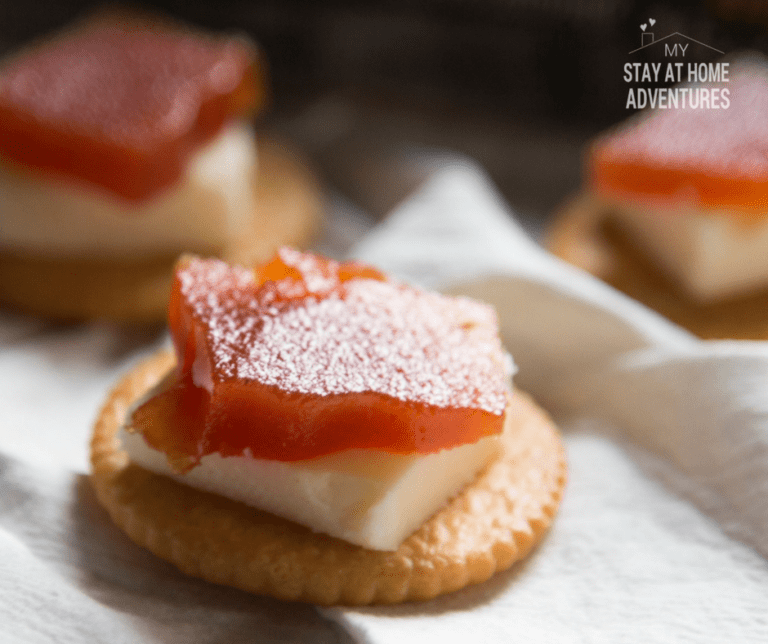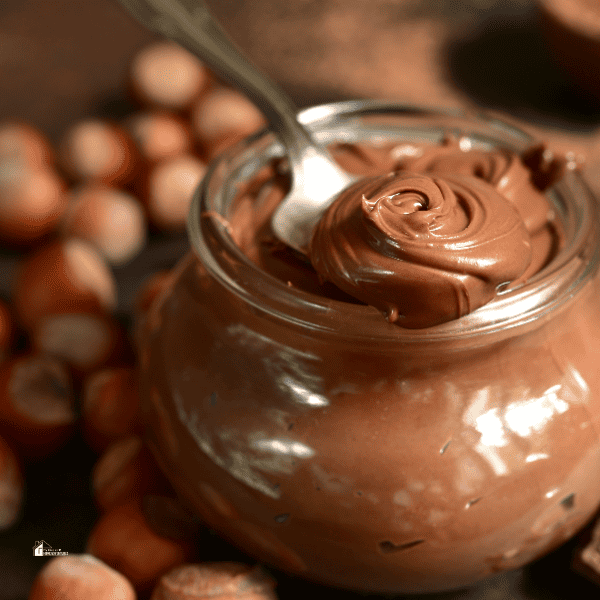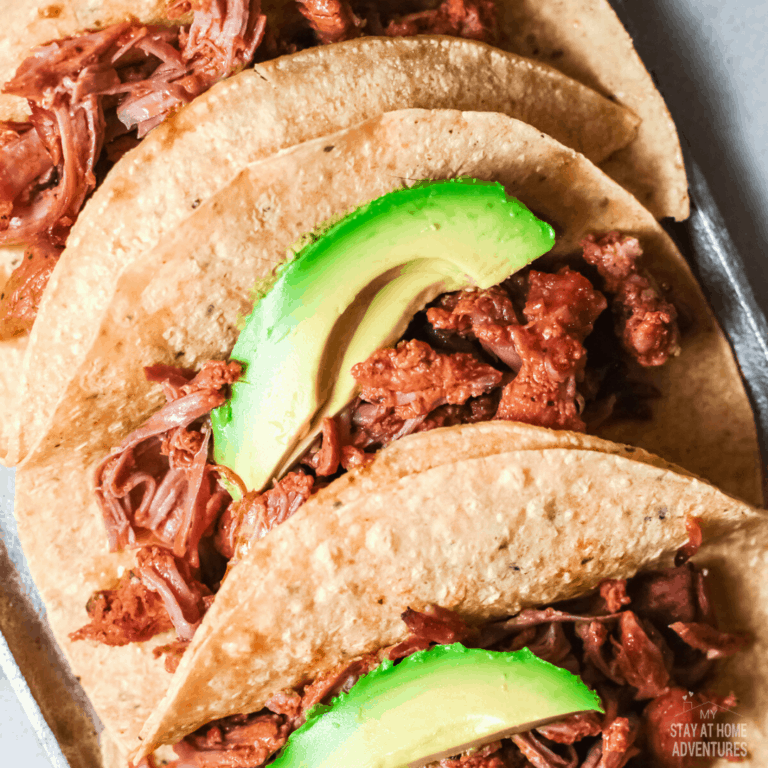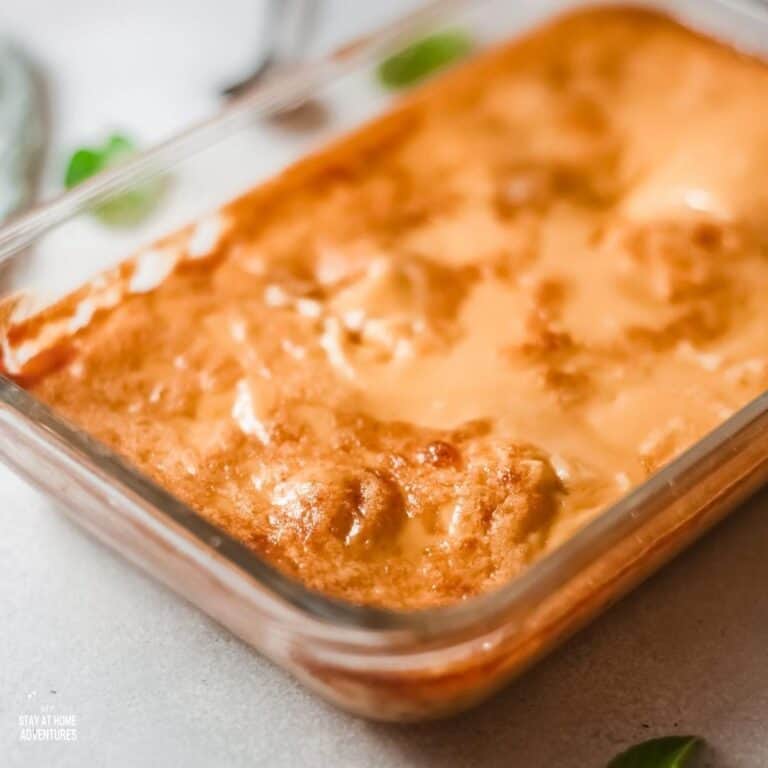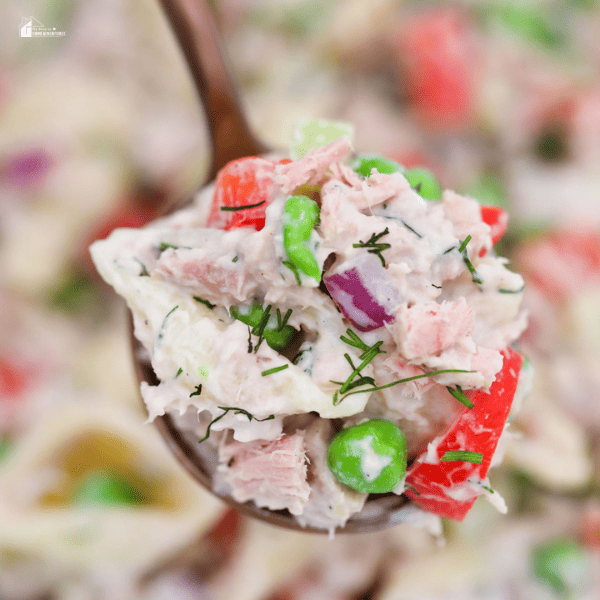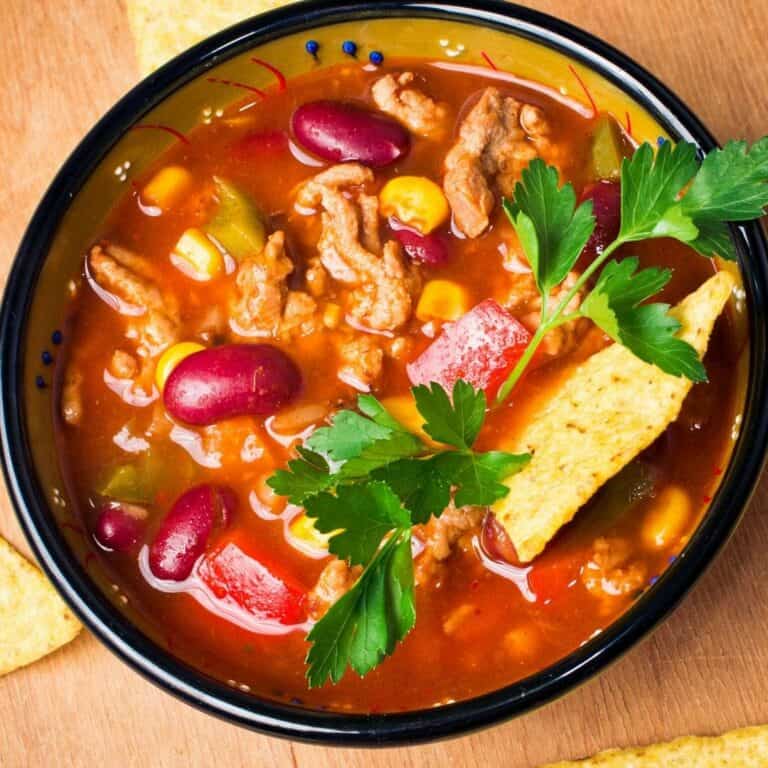Basque Cheesecake Recipe (Video)
This post may contain affiliate links which might earn us money. Please read my Disclosure and Privacy policies hereIf you've been searching for a unique dessert to serve during your next special occasion, look no further than Basque Cheesecake, also known as burnt cheesecake. This traditional dish from Spain is easy to make but packs a flavorful punch. Made with cream cheese and topped with caramelized sugar, this velvety cake has a sweet, creamy texture that will make your guests return for seconds.
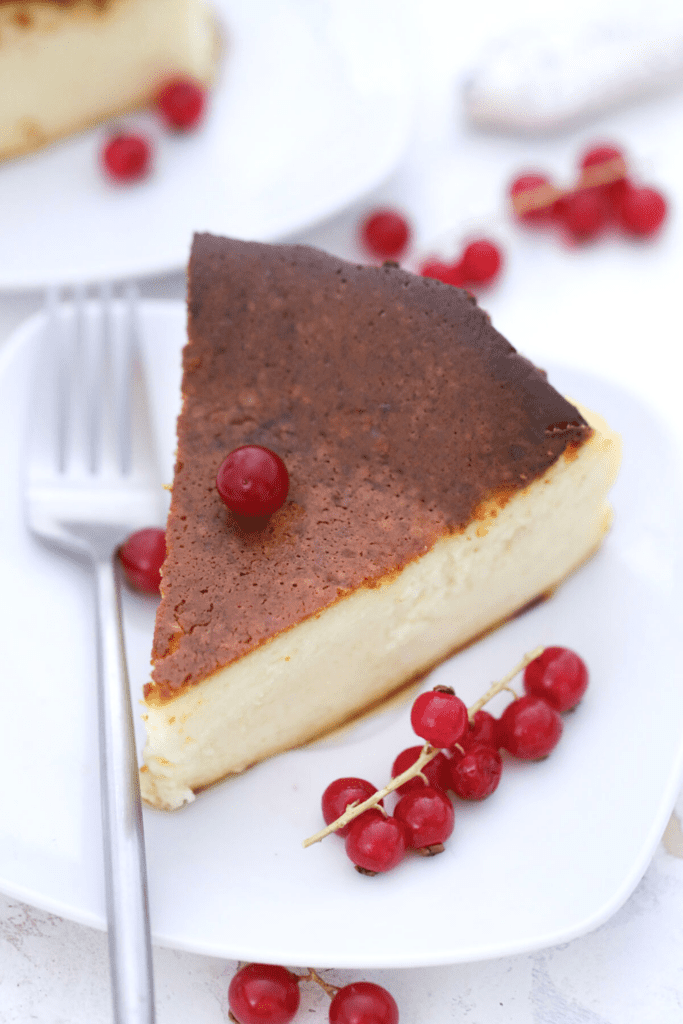
Basque Cheesecake
Basque cheesecake is a type of dessert that has gained immense popularity in recent years. Originating from the Basque region in Spain, this rich and creamy cheesecake is a delightful addition to any special occasion. The cake is characterized by its distinct burnt crust, creamy texture, and subtle sweetness. It is also known for its ease of preparation, making it an ideal choice for novice bakers.
You might enjoy these recipes:
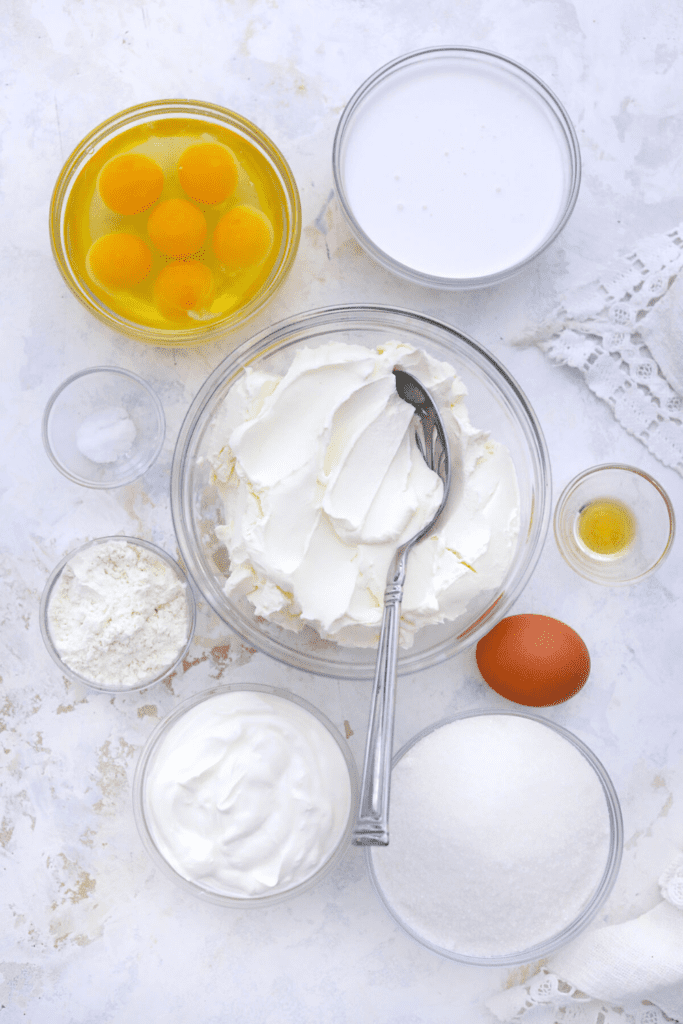
Ingredients needed:
The ingredients for making brasque cheesecake that the whole party will love are listed below. Please scroll down to view our printable recipe card with detailed steps and measurements.
- Full-fat cream cheese: Room temp
- Granulated sugar
- Eggs: Room temp
- Vanilla extract
- Heavy cream
- Sour cream
- Salt
- All-purpose flour
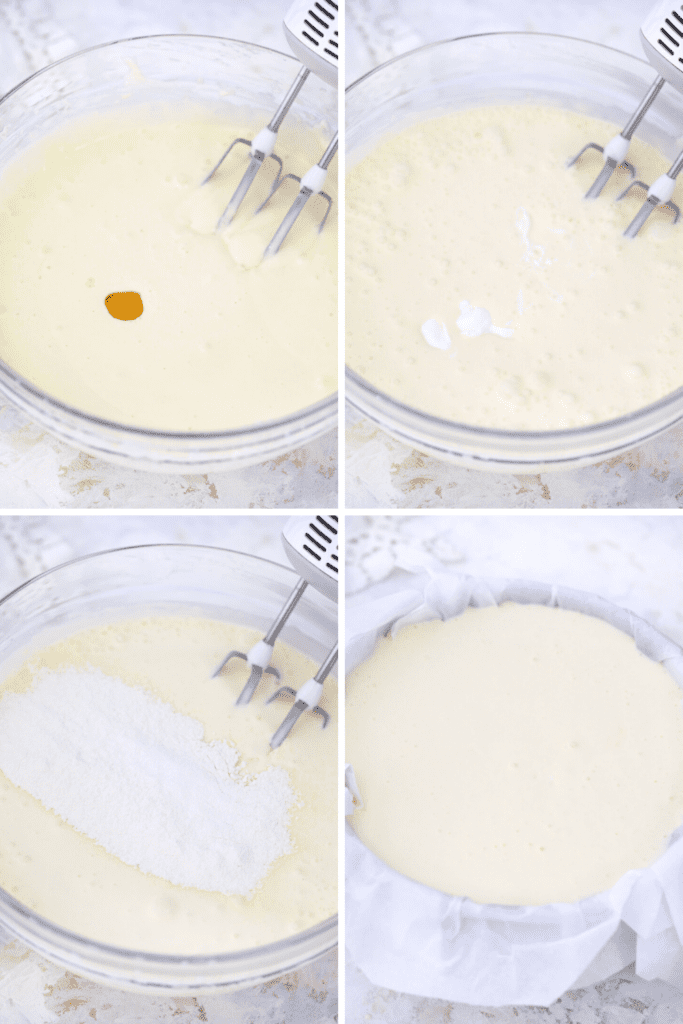
How to make Brasque cheesecake from scratch?
- Preheat the oven: Preheat the oven to 400F and butter the inside of a 9-inch or 10-inch springform pan.
- Press parchment paper: Next, press two layers of parchment paper into the bottom and up the sides of the pan, for this is a crustless cheesecake. The paper should stick 2 inches above the edge of the pan.
- Beat and mix: Then, in a large bowl, using a hand mixer or stand mixer, beat together the cream cheese and sugar on medium-low. Mix the eggs one at a time on low speed, then add the vanilla extract. Stop to scrape the sides and bottom of the bowl.
- Pour the cream: After that, with the mixer on low speed, slowly pour the heavy cream. Once combined, add the sour cream.
- Bake: Fold the flour and salt once it is smooth. Bake for 60-65 minutes or until the top is completely burnt and it has a slight jiggle just in the center of the cheesecake.
- Chill and serve: Let it cool to room temperature on a wire rack. After that, chill overnight in the fridge. Finally, slice, serve and enjoy.
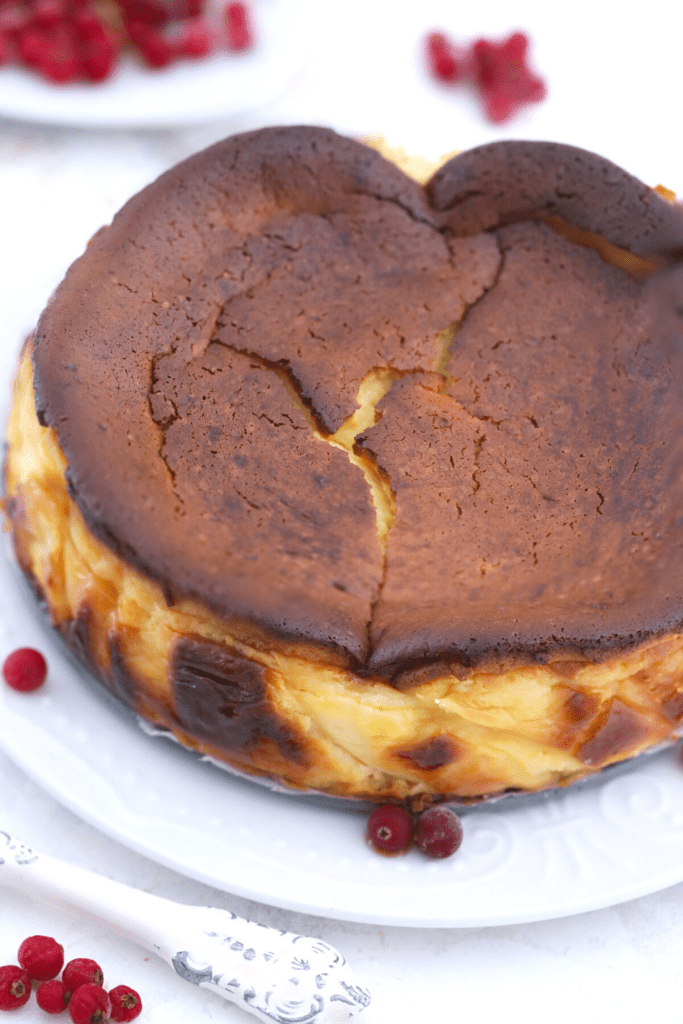
How to serve:
One of the most classic ways to serve this cheesecake is by pairing it with fresh fruits such as strawberries, raspberries, or blueberries. The tartness of the berries complements the sweetness of the dessert perfectly, while their bright colors make for a beautiful presentation. If you want to add an extra touch of elegance, sprinkle some powdered sugar on top or drizzle some raspberry coulis over the cake for a pop of color and flavor.
Frequently asked questions
What is the difference between Basque cheesecake and normal cheesecake?
One of the main differences between Basque cheesecake and normal cheesecake is the cooking method. While traditional cheesecakes are baked slowly and evenly at low temperatures, Basque cheesecakes are baked quickly at high temperatures. This results in a slightly burnt exterior with distinctive flavor and texture.
Another difference between these two types of desserts is their ingredient composition. Classic American-style cheesecakes typically use cream cheese as their main ingredient, while Basque-style cakes contain more eggs and less cream cheese. This makes the resulting cake denser and less sweet than its counterpart.
How do you know when a Basque cheesecake is done?
A Basque cheesecake is done when the edges of the cake have become a deep golden brown, and the center is slightly jiggly. This can be tested by lightly pressing on the center of the cake and seeing if it bounces back slightly. It should also smell lightly of caramelized sugar and other ingredients. Additionally, a thermometer inserted into the center of the cake should read around 190°F.
Why is my Basque cheesecake not soft?
The texture of Basque cheesecake is supposed to be dense and creamy yet soft. However, if your cheesecake isn’t turning out as soft as you'd like, there could be a few common reasons for this.
Firstly, it may have been over-baked. Without a thermometer to check the internal temperature, you can check the doneness of your Basque cheesecake by lightly pressing it with your finger– if it springs back quickly, it’s done.
If your cheesecake still seems too firm, it is likely that it was baked for too long. To prevent this in future bake-offs, set a timer to check on your cake every 5-10 minutes.
Secondly, the ingredients might not have been properly blended before baking. This can cause an uneven texture or too much air to be whipped into the batter, making it harden faster than expected. Try using a hand blender for 20-30 seconds to ensure everything is evenly mixed.
Finally, it’s also possible that not enough sugar or fat was added to the cheesecake batter. As sugar helps retain moisture and fat adds richness, not enough of these ingredients can make your cake firm and dry. To fix this, try increasing the amount of sugar and/or fat in your next Basque cheesecake recipe.
How to store leftovers:
To store leftover Basque cheesecake, first, allow the cake to come to room temperature before placing it in an airtight container. Be sure to cover the top of the cheesecake with plastic wrap or aluminum foil. If there is excess moisture, place a piece of parchment paper on top before wrapping it with plastic wrap or aluminum foil.
Refrigerate for up to 2 days. If you need to store your cheesecake for longer than that, wrap it tightly and freeze it for up to 3 months.
To thaw, place the frozen cake in the refrigerator overnight and enjoy! Be sure not to leave the Basque cheesecake at room temperature for more than two hours, or bacteria can begin to form.
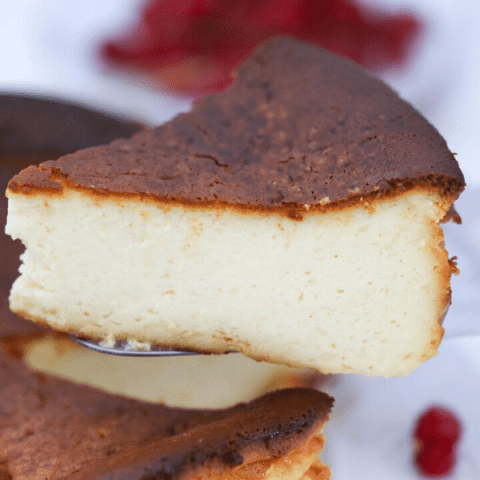
Basque Cheesecake
Explore the classic Spanish dessert with this easy-to-follow Basque Cheesecake recipe!
This beloved cake is characterized by its burnt crust, delicious creamy texture, and subtle sweetness.
Let your creativity come alive with this unique baking experience - get started now!
Ingredients
- 5 8oz blocks full-fat cream cheese, room temp
- 1 2/3 cups granulated sugar
- 6 large eggs, room temp
- 2 teaspoons vanilla extract
- 1 cup heavy cream
- 1 cup sour cream
- 1/2 teaspoon salt
- 1/4cup all-purpose flour
Instructions
- Preheat the oven to 400F and butter the inside of a 9inch or 10inch springform pan.
- Press two layers of parchment paper into the bottom and up the sides of the pan, as this is a crustless cheesecake. The paper should stick 2 inches above the edge of the pan.
- In a large bowl, using a hand mixer (or stand mixer) beat together the cream cheese and sugar on medium-low.
- On low speed, mix in the eggs one at a time, and then the vanilla extract. Stop to scrape the sides and bottom of the bowl.
- With the mixer on low speed, slowly pour the heavy cream. Once combined, add the sour cream.
- Once smooth, fold the flour and salt.
- Bake for 60-65 minutes or until the top is completely burnt and it has a slight jiggle just in the center of the cheesecake.
- Let it cool to room temperature on a wire rack. After that, chill overnight in the fridge.
- Slice, serve and enjoy.
Recommended Products
As an Amazon Associate and member of other affiliate programs, I earn from qualifying purchases.
Nutrition Information:
Yield: 12 Serving Size: 1Amount Per Serving: Calories: 591Total Fat: 46gSaturated Fat: 26gTrans Fat: 0gUnsaturated Fat: 14gCholesterol: 222mgSodium: 432mgCarbohydrates: 37gFiber: 0gSugar: 33gProtein: 10g
These nutritional calculations might not be accurate. Please speak with a licensed nutritionist to assist you.




